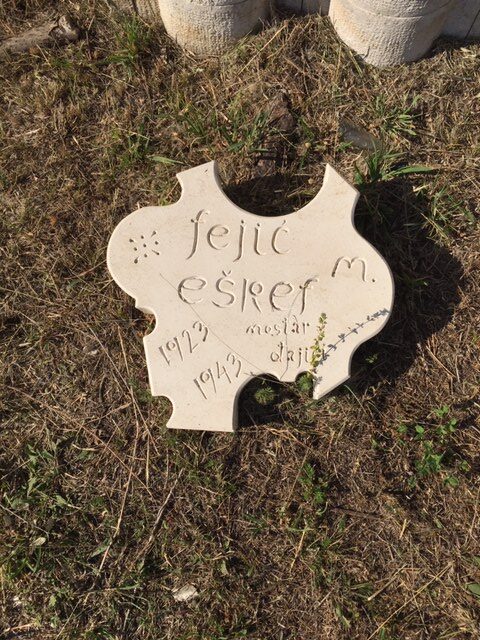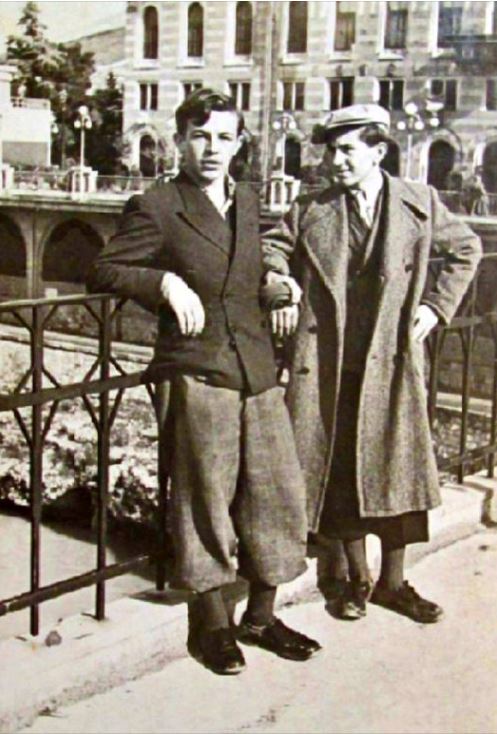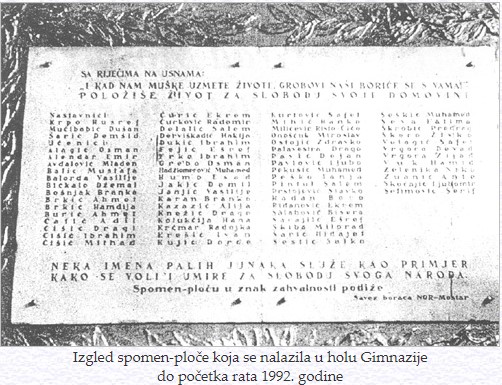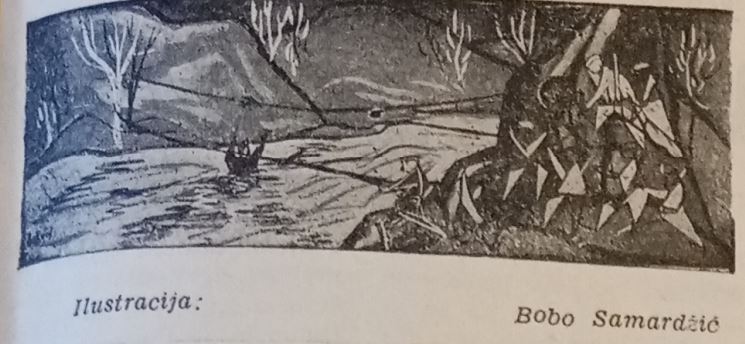
brochure "Partizanski spomenik u Mostaru" (1980)
book “Spomenica Mostara 1941-1945.”
another document or proof of the memorial stone (e.g., a photograph).
Ešref M. FEJIĆ
EŠREF FEJIĆ ETA, son of MUHAMED, born on September 5, 1923, in Mostar, a student who attended the Trade School. A football player for “Velež,” a member of SKOJ since 1941, and KPJ since 1942. In the Battalion since September 1941.
Because of Ešref and their other children, their mother Adila was taken to the police: “There, near Herenčić, sat the son of a teacher named Jahić in uniform. He interrogated me and just smirked. He asked if I had children and where they were, and I replied that I did, that they were alive and well with their mother, but I didn’t know where they were; they weren’t little for me to keep track of them. They asked about my son Džemal, he was the oldest, they asked about Šefko, they asked about Esad and the youngest, Ešref, who was 17-18 years old at the time, and I told them that he went on a mission to procure grain and got delayed somewhere and didn’t return. They then told me to report it if my sons came to me, and if they were not guilty, they would let them go, if they were a little guilty, they would go to prison, and if they were very guilty, they would be shot.”
Ešref survived the Fifth Offensive on the Sutjeska and returned to Mostar with 80 other fighters for recovery. After that, he returned to the battle. As a lance corporal, he perished in Đajići near Konjic in December 1943; according to records, he drowned in the Neretva River during an operation.
“The unit in Špiljani, under the leadership of the Battalion’s quartermaster Džemal Dizdar, organized an economic action to gather food in Đajići on December 17. With one platoon, they crossed the Neretva River using a rope with a trapeze for river crossing. While our fighters were collecting food, the Ustaše cut the rope on the Neretva, preventing them from returning to our territory. The Neretva was swollen, and the fords could not be used. Ešref Fejić, a student from Mostar, volunteered to swim across the Neretva tied to a rope. As he entered the water, moving away from the shore, he was carried away by the river’s speed and began to sink. He unfastened the rope but, exhausted, met his death in the waves of the river.”
Ešref was the second of four sons of Muhamed and Adila Fejić, one of the five deceased members of this family that also included: Džemal, Šefko, Esad, Samija. Two of Ešref’s uncles were killed by Germans (one of them was Dr. Asim Opijač).
One of the most famous streets in Mostar bears the name of the Fejić brothers. Ešref’s name was also recorded on a memorial plaque for students at Mostar Gymnasium. The plaque disappeared without a trace during the war events of 1992-1995. The well-known song “Mostarska mati” by Mostarske kiše is dedicated to Ešref’s mother, Adila. In 1972, Mišo Marić published an interview with his mother Adila, which you can read here.
Ćemalović, Enver (1986): Mostarski bataljon, Mostar; https://poskok.info/mostarke-u-doba-okupacije-sloboda-nije-stigla-iz-bajke/; Džemil Šarac, članak „Sa Mostarcima“, Hercegovina br 9, str 221; http://www.most.ba/091/015.aspx; http://rsdvelezmostar.blogspot.com/p/fk-velez.html ; grupa autora: Spomenica Mostara 1941-1945; article “Majka iz ulice sinova”, with Adila Fejić, author: Mišo Marić, “Sloboda” newspaper, 1972 (source: CIDOM)
Photo of the memorial plaque: S. Demirović
Do you have more information about this fighter? Share your stories and photographs. Let's keep the memory alive!












